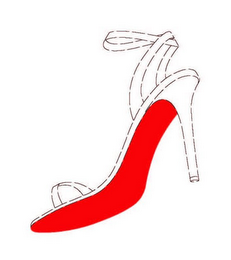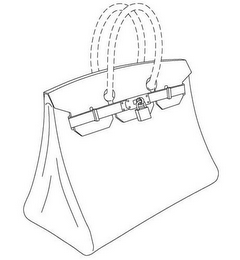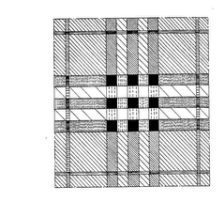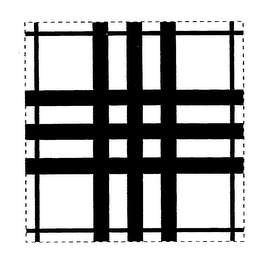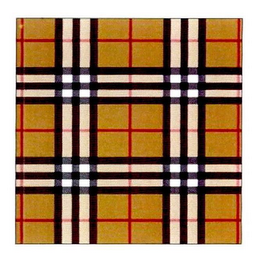Kimberly R. Endelson[1]
It is often a question asked by fashion designers, “How do I protect my designs?” Many understand that trademark law can protect their company’s brand name and logo, but are not aware of the options available for protecting the actual designs. One option is through U.S. trademark law by registering for “trade dress,” and another option is through U.S. patent law by obtaining a design patent.
TRADE DRESS
Trademark law offers common law and federal protection for a word, symbol or phrase used by producers to identify their product. Common law protection is obtained by using the mark in association with a product or service. Federal protection can be obtained under Section 43(a) of the Lanham Act[2] by applying for registration of a trademark through the United States Patent and Trademark Office (USPTO).
Trademark law can protect aspects of a product, such as trade dress. According to Two Pesos, Inc. v. Taco Cabana, Inc., “[t]he ‘trade dress’ of a product is essentially its total image and overall appearance.”[3] Trade dress may include product features such as “size, shape, color or color combinations, texture, graphics, or even particular sales techniques.”[4]
Trade dress is able to protect the visual characteristics of a product as long as those characteristics are distinctive.[5] A mark can either be inherently distinctive or have acquired distinctiveness through use. A mark is inherently distinctive and entitled to protection if its “intrinsic nature serves to identify a particular source of a product…”[6] For example, the “square size, bright coloring, pebbled texture, polar bear and sunburst images” on the packaging of a Klondike®[7] ice cream bar was held to be inherently distinctive.[8] A mark can also acquire distinctiveness, otherwise known as secondary meaning, by creating, through substantial or extended use, an association in the mind of the public between the mark and the goods or services the mark is identifying.[9]
In addition, trade dress can protect only non-functional product design.[10] A product feature is functional and cannot serve as a trademark “if it is essential to the use or purpose of the article or if it affects the cost and quality of the article.”[11]
One is able to register a mark for trade dress through filing an application with the USPTO. The application includes a drawing, a description of the mark, an identification of goods or services, and a specimen, if there is one.[12]
Trade dress may be used to protect not only the “dressing” or packaging of a product but also the design of a product[13] such as shoes,[14] handbags[15] and fabric patterns.[16]
Trade Dress Protection for Shoes
A recent case provides an example of how trade dress was used to protect a shoe design. In Christian Louboutin S.A. v. Yves Saint Laurent America Holding Inc., Christian Louboutin used trade dress law to protect the design of his red-soled shoes.[18] In January 2008, the USPTO granted Christian Louboutin a trademark for his design and stated, “The color(s) red is/are claimed as a feature of the mark. The mark consists of a lacquered red sole on footwear.”[19] Then in 2011, Yves Saint Laurent prepared to market a line of monochrome shoes. One of these shoes was entirely red, including the “upper” portion of the shoe and the bottom of the shoe called the “outsole.” In 2011, Louboutin sued YSL in the United States District Court for the Southern District of New York, claiming that YSL’s design infringed his trademark. YSL replied that the Louboutin trademark was not valid.
In Louboutin, the District Court considered whether a single color may serve as a legally protected trademark, and in particular, as the mark for a particular style of high fashion women’s footwear. The District Court held that a single color can never serve as a trademark in the fashion industry.[20] The District Court stated, “Because in the fashion industry color serves ornamental and aesthetic functions vital to robust competition, the Court finds that Louboutin is unlikely to be able to prove that its red outsole brand is entitled to trademark protection, even if it has gained enough public recognition in the market to have acquired secondary meaning.”[21]
Louboutin appealed the lower court decision to the United States Court of Appeals for the Second Circuit. The Court of Appeals affirmed in part, reversed in part and remanded the case to the District Court. The Court of Appeals based its decision on the Supreme Court case Qualitex Co. v. Jacobson Products, Co., which held that a single color alone can serve as a trademark, as long as that color has acquired secondary meaning and identifies the brand.[22] In making its determination of whether the red color on Louboutin’s shoes had acquired secondary meaning and identified the brand, the Court of Appeals examined factors such as the company’s advertising expenditures, media coverage and sales success.[23] The Court of Appeals held that Louboutin’s signature red shoe sole had indeed acquired secondary meaning, saying it was a “symbol”[24] that had acquired secondary meaning and become “uniquely” associated with the brand.[25] The court decided that trademark protection would extend only to designs in which the red sole (the “outsole”) contrasted with the color of the shoe (the “upper”). The court stated that “the trademark, as thus modified, is entitled to trademark protection.”[26]
Trade Dress Protection for Handbags
Trade dress may also be used to protect the overall appearance or shape of a product, such as the shape of the Hermès®[28] Birkin®[29] handbag. In Hermès International v. Emperia, Inc., the French luxury goods manufacturer Hermès International sought to use trade dress law to protect the design of one of their highly coveted handbags called the Birkin® handbag. Hermès filed suit against Emperia, Inc., Anne-Sophie, Inc., and Top’s Handbag, Inc. in the United States District Court for the Central District of California for infringing on its trademark.[30] Hermès had obtained a trademark through the USPTO on the shape of its Birkin® handbag, specifically on “the configuration of a handbag, having rectangular sides, a rectangular bottom, and a dimpled triangular profile” as well as on the top of the bag and the lock.[31] Hermès was successful and the District Court permanently enjoined the defendants from manufacturing the infringing handbags.
Trade Dress Protection for Fabric Patterns
Trade dress may also protect a particular pattern, such as a pattern of cloth used as part of a product, as long as it serves to identify the source of the product. For example, British luxury designer Burberry Limited uses trade dress law to distinguish their designs by incorporating their trademark check pattern[35] into different products. The USPTO has granted Burberry Limited numerous trademark registrations for its trademark check pattern, stating that the mark has acquired distinctiveness.[36] Thus it is arguable that over time, through sales and advertising, the company has created an association between the check pattern and the Burberry®[37] brand so that the pattern identifies the source of the product as Burberry.
It may be necessary to show secondary meaning when protecting your design mark. Accordingly, before registering for the mark, it may be wise to consider how you or your company will market the product. Trade dress protection may or may not be a viable option for an emerging designer depending on whether the designer can prove that the mark is well-recognized by consumers and one can show an association between the product and the brand. An alternative option for an emerging designer or a well-established company that is coming out with a new product is to apply for a design patent.
[1] The information contained in this article does not constitute legal advice or legal opinion, but has been prepared for general informational purposes only. Any opinions expressed in this article shall not be construed to represent the legal opinion of this firm, its attorneys or any of its clients. The receipt of this article does not create an attorney-client relationship. ©2016 Wyatt & Associates, LLP
[2] 15 U.S.C. §1125(a) (1982).
[3] Two Pesos, Inc. v. Taco Cabana, Inc., 505 U.S. 763, 764 n.1 (1992) (quoting Taco Cabana Int’l v. Two Pesos, Inc., 932 F.2d 1113, 1118 (5th Cir. 1991)).
[4] Id. at 765 n.1 (quoting John H. Harland Co. v. Clarke Checks, Inc., 711 F.2d 966, 980 (11th Cir. 1983)).
[5] Id. at 768.
[6] Two Pesos, 505 U.S. at 768.
[7] Klondike® is a registered trademark of Conopco, Inc.
[8] Id. at 787, citing AmBrit, Inc. v. Kraft, Inc., 812 F.2d 1531, 1536 11th Cir. 1986).
[9] Wal-Mart Stores, Inc. v. Samara Bros. Inc., 529 U.S. 205, 213-216 (2000) (quoting Inwood Labs., Inc. v. Ives Labs., Inc., 456 U.S. 844, 851, n.11 (1982)).
[10] Inwood Labs., Inc. v. Ives Labs., 456 U.S. 844, 863 (1982).
[11] TrafFix Devices, Inc. v. Marketing Displays, Inc., 532 U.S. 23, 32 (2001).
[12] Trademark Manual of Examining Procedure (TMEP), § 1202.02, April 2016.
[13] Wal-Mart, 529 U.S. at 209.
[14] Christian Louboutin S.A. v. Yves Saint Laurent Am. Holding, Inc., 696 F.3d 206 (2d Cir. 2012).
[15] Hermès Int’l v. Emperia, Inc., 14-CV-03522 (C.D. Cal. 2014).
[16] Burberry Limited’s Trademark Check Pattern: U.S Reg. No. 1,241,222 (registered June 7, 1983); U.S. Reg. No. 2,732,617 (registered July 1, 2003); U.S. Registration No. 2,022,789 (registered Dec. 17, 1996).
[17] United States Patent and Trademark Office, www.uspto.gov. U.S. Registration No. 3,361,597 (registered Jan. 1, 2008).
[18] See generally, Louboutin, 696 F. 3d 206.
[19] U.S. Registration No. 3,361,597 (Registered Jan. 1, 2008).
[20] Christian Louboutin S.A. v. Yves Saint Laurent Am., Inc., 778 F. Supp. 2d 445, 451, 457 (S.D.N.Y. 2011).
[21] Louboutin, 778 F. Supp. 2d at 449.
[22] Qualitex Co. v. Jacobson Products Co., 514 U.S. 159 (1995).
[23] Louboutin, 696 F.3d at 226.
[24] Id. at 227, see Qualitex, 514 U.S. at 162.
[25] Louboutin, 696 F.3d at 226, see Two Pesos, 505 U.S. at 766 n.4.
[26] Louboutin, 696 F.3d at 212.
[27] United States Patent and Trademark Office, www.uspto.gov. U.S. Trademark Registration No. 3,936,105 (registered Mar. 29, 2011).
[28] Hermès® is a registered trademark of Hermès International.
[29] Birkin® is a registered trademark of Hermès International.
[30] Hermès International v. Emperia, Inc., 14-CV-03522 (C.D. Cal. 2014).
[31] U.S. Trademark Registration No. 3,936,105 (registered Mar. 29, 2011).
[32] United States Patent and Trademark Office, www.uspto.gov. U.S Reg. No. 1,241,222 (registered June 7, 1983).
[33] United States Patent and Trademark Office, www.uspto.gov. U.S. Reg. No. 2,732,617 (registered July 1, 2003).
[34] United States Patent and Trademark Office, www.uspto.gov. U.S Reg. No. 3,529,814 (registered Nov. 11, 2008).
[35] Burberry Limited’s Trademark Check Pattern: U.S Reg. No. 1,241,222 (registered June 7, 1983); U.S Reg. No. 2,022,789 (registered Dec. 17, 1996); U.S Reg. No. 1,855,154 (registered Sept. 20, 1994); U.S Reg. No. 2,015,462 (registered Nov. 12, 1996); U.S Reg. No. 2,689,921 (registered Feb. 25, 2003); U.S Reg. No. 2,845,852 (registered May 25, 2004); U.S Reg. No. 3,529,814 (registered Nov. 11, 2008); Burberry Limited’s Trademark Check Pattern (no color designation): U.S Reg. No. 2,612,272 (registered Aug. 27, 2002); U.S Reg. No. 2,732,617 (registered July 1, 2003); U.S Reg. No. 2,728,709 (registered Jan. 24, 2003).
[36] Id.
[37] Burberry® is a registered trademark of Burberry Limited.
